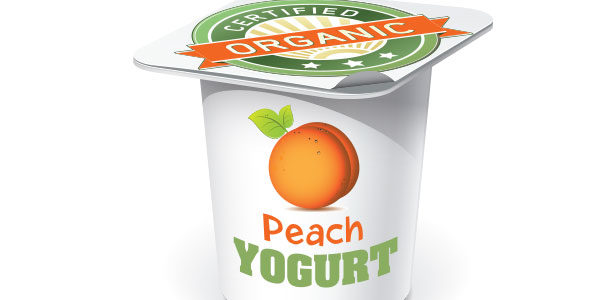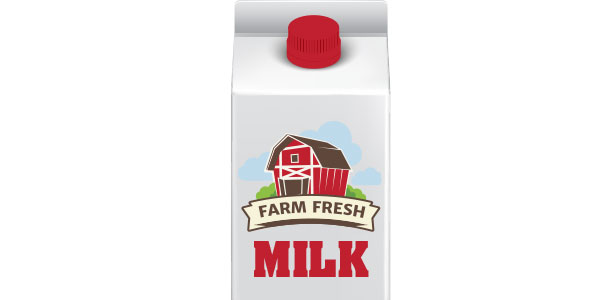In the dairy industry, 2015 may be the year of the consumer, which brings with it some great news for farmers. While sales of gallons of white milk continue to decline, dairy continues to grow in value-added and niche segments such as whole-fat dairy products, organic and yogurt.
Contributing to demand is the growing trend of consumers looking for products with simpler ingredients, combined with ongoing consumer concern about processed foods and artificial ingredients.
Whole fats
One of the growing trends in dairy is whole-fat products. This sentiment is exemplified by the many media stories during the past year highlighting the return of “real fats” to consumers’ dinner tables, a trend playing out on retail store shelves across the country.
“Consumers are feeling good about incorporating real fats and real food into their diets,” says Suzanne Kevlyn, director of consumer insights at WhiteWave Foods, parent company of brands such as Horizon Organic and Yulu.
Whole-fat cream products, such as half and half, organic butter and organic cheese, are in high demand. In both conventional and organic milk, whole milk and 2 percent milk are growing, while 1 percent and skim milk sales are on the decline.
CEB Iconoculture’s 2014 report “A New Fattitude” noted consumers are coming “full circle on natural fats.” According to that report, new models and views on fat consumption view real fat as a good source of energy and faux fat as a less desirable category.
CBS News echoed this finding, noting that “dieters are sick of foods that provide only fleeting satisfaction and seem to leave them hungrier. The new thinking is that eating foods with more protein or fat will make dieters less likely to binge later, even if they’re higher in calories.”
Organic
The organic category has been, and continues to be, one of the fastest-growing segments of the food industry. Averaging double-digit growth year over year, the segment is now $32.3 billion in sales. As part of this trend, organic dairy offerings continue to rise in consumer popularity.
Specifically, more households are turning to organic milk, while many other dairy categories are flat to declining. Organic milk sales grew 8 percent in 2014. Additionally, while butter overall grew at 7 percent in 2014, organic butter grew 24 percent. Organic cheese grew at a dramatic rate of 35 percent in 2014, primarily driven by existing consumers buying more.
Organic food sales in 2013 represented 11.4 percent growth over 2012. Total organic sales have steadily grown since the implementation of the USDA organic regulations in 2002. Today, organic food is 4 percent of total food sales in the U.S., with the second-largest organic category being dairy. In all, organic dairy represents 15.2 percent of total organic food sales.
Yogurt
Yogurt has been called the category of the decade. The percentage of Americans consuming yogurt at least once in a two-week period has grown nearly 13 percent during the past decade, and more than a third of the population now consumes yogurt regularly. Yogurt is a major driver in the dairy industry and today is an $8 billion category that has grown nearly 50 percent in dollar sales between 2009 and 2014.
According to the market intelligence agency Mintel, “the introduction of Greek-style products led to significant year-over-year growth in the yogurt category in 2011 and subsequent years.” In addition, the agency projects that “overall yogurt product innovation that falls in line with consumer interest in health and indulgence will allow for continued positive performance.”
Mintel also notes that “affluent consumers demand all-natural ingredients,” saying consumers “with household income of $100K+ were most likely to choose yogurt with all-natural ingredients, premium ingredients and Greek style. Part of the success of Greek yogurt is due to its all-natural offering, a clear attraction for more affluent consumers.”
Rebekah Lyle, WhiteWave’s director of marketing for yogurt, says, “Greek yogurt has paved the path for other international-style yogurts. We’re seeing increased consumer demand for convenient, healthy and satisfying snacks. Consumers increasingly are not willing to sacrifice taste, and they are seeking out more unique, global flavors.”
All predictions point to yogurt continuing to be a dynamic, growing category in 2015. Greek yogurt now represents nearly half of the overall yogurt category, but it is beginning to show signs of maturing, offering opportunities for new styles to gain a foothold with consumers.
As the Greek category matures, look for new, unique offerings such as Icelandic-style yogurt, Australian-style yogurt and other innovations that seek to deliver on high protein and taste benefits. Also look for more dessert-like yogurt offerings, which satisfy consumer desire for an indulgent yet relatively healthier treat.
Keep it simple
A growing consumer trend of seeking out products with less ingredients, and easy-to-understand labels with ingredients that consumers recognize, is on the rise. Mintel notes, “Transparency is potent for younger consumers. They want to know what the brand consists of, where it came from and how it got to them.
The more information, the better, and this applies to everything from calorie labels at restaurants to package stickers saying what’s inside.” Eight chefs cite natural ingredients and minimally processed food as one of the top five hottest trends for 2015, according to the National Restaurant Association.
USA Today echoed this trend in consumer demand, saying “Nielsen’s Global Health and Wellness Survey offers compelling statistical evidence that younger consumers worldwide are far more concerned about everything from food ingredients to genetically modified food to organic foods than are their parents and grandparents.”
Companies are overhauling their product line-ups to reflect consumers’ evolving tastes and demand for simpler ingredient labels. It’s clear from industry research and consumer behavior, and shopping patterns, that there’s a cultural shift under way.
Thanks to the growth of products from innovative manufacturers, there continues to be a home for milk in growing market segments that reflect the consumer’s evolving tastes and growth trends of simple ingredients, whole fats, yogurt, organic and less processed products.
Producers as well as distributors can look to these trends as a way to grow the dairy category and find continued success among changing consumer tastes. PD
Robyn Nick is the senior manager of organic stewardship and industry relations at Horizon Organic.
References omitted due to spacebut are available upon request. Click here to email an editor.





